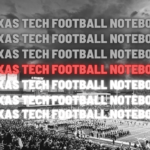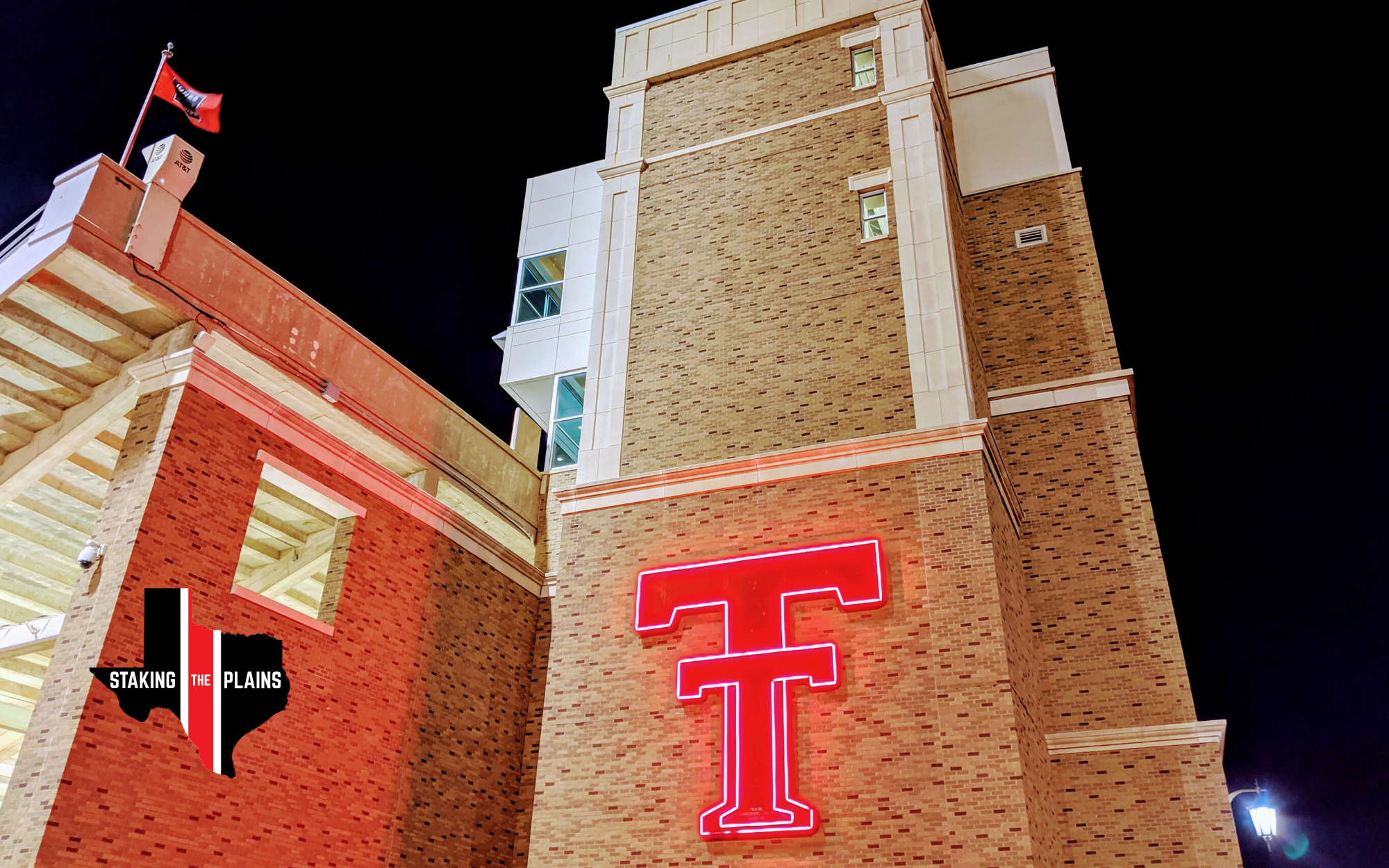In many ways, it feels like college football season has been a long time coming following the sports hiatus brought on by COVID-19. As Coach Wells pointed out, kickoff on Saturday will be six months to the day from when the Red Raiders were called off the court and the Big 12 basketball tournament was canceled. In other ways, it feels like the season opener completely came out of nowhere.
I’ll be doing weekly posts similar to what I’ve done for basketball and football seasons in the past. Here, we’ll take a look at what various analytical models have to say about Texas Tech’s odds on game day and their season outlook. Before we get to 2020, let’s take a look at how some of these models fared last season.
ESPN’s Football Power Index (FPI)
Before the season last year, FPI had Texas Tech pegged as the 45th best team in the country. It pegged Texas Tech as a 6 or 7-win team (combined odds of more than 40% for either of those two records). The Red Raiders’ eventual 4-8 record was given just a 7% chance from FPI before the season kicked off. So they were considerably off, but in their defense Tech lost several one possession games. So they may have been a 6-win team trapped in a 4-8 record.
SP+
Bill Connelly’s SP+ model doesn’t provide as much data as FPI in terms of season record predictions, game-by-game odds, etc. They had Tech pegged as the 55th best team in the country preseason last year. Their more bearish outlook probably means they were more accurate than FPI in 2019.
Adam McClintock
Adam McClintock’s model is mostly behind a Patreon paywall that you can access for a few bucks per month. His model provides season outlooks, game-by-game odds, and predicted point spreads. Last year his model had Tech finishing 8th in the Big 12 with a 4-8 record. Overall, he was very accurate.
– – –
So what do these same models (plus Sagarin, which I don’t have preseason data for from last year) say about Texas Tech in 2020?
FPI
Here’s how FPI has the Big 12 stacked up going into the season. The FPI score is the predicted margin of victory against an “average” team on a neutral field. For reference, Tulsa (0.2) and FAU (-0.2) are the most average teams in the country per FPI.
| Team | National Rank | FPI | Big 12 Title Odds |
| Oklahoma | 7 | 21.6 | 37.1 |
| Texas | 8 | 13.8 | 39.9 |
| Oklahoma State | 12 | 11.8 | 9.8 |
| TCU | 15 | 10.4 | 7.2 |
| Iowa State | 17 | 9.4 | 2.6 |
| Kansas State | 20 | 7.7 | 1.3 |
| Baylor | 21 | 7.3 | 1.2 |
| Texas Tech | 24 | 3.2 | 0.8 |
| West Virginia | 30 | -2.4 | 0.3 |
| Kansas | 62 | -8.4 | 0 |
Keep in mind the national rankings listed above don’t include teams whose conferences have opted out of the 2020 season. FPI projects Texas Tech will have a final season record of 4.7 wins and 5.3 losses. Below are FPI’s game-by-game probabilities.
| Opponent | Win Probability (%) |
| Houston Baptist | 99.3 |
| Texas | 21 |
| @ Kansas State | 39.5 |
| @ Iowa State | 35.2 |
| West Virginia | 67 |
| Oklahoma | 20.8 |
| @ TCU | 27.7 |
| Baylor | 50.9 |
| @ Oklahoma State | 27.5 |
| Kansas | 86.1 |
| Season average | 47.5 |
If these probabilities are to be believed, the games against Kansas State and Baylor are the biggest tossups.
SP+
SP+ measures the same thing as FPI; the expected margin of victory over an average team on a neutral field. The most average teams according to SP+ are NC State and Houston (0.2).
| Team | National Rank | SP+ |
| Oklahoma | 8 | 22.6 |
| Texas | 14 | 17 |
| Oklahoma State | 21 | 12.9 |
| Iowa State | 30 | 10.6 |
| Baylor | 33 | 10.1 |
| TCU | 36 | 9.5 |
| Kansas State | 54 | 2.4 |
| Texas Tech | 59 | 0.7 |
| West Virginia | 64 | -1.3 |
| Kansas | 113 | -13 |
It’s a little bit difficult to compare it to FPI in terms of national ranking because SP+ is ranking all college football teams for now, not just the ones that are playing. But using each model’s measurements regarding expected outcome vs. an average team, FPI is 2.5 points more bullish than SP+.
Adam McClintock
McClintock’s model is also ranking all FBS teams for now. Here’s where he has the Big 12 preseason.
| Team | National Rank |
| Oklahoma | 4 |
| Texas | 13 |
| Oklahoma State | 23 |
| TCU | 32 |
| West Virginia | 37 |
| Iowa State | 45 |
| Baylor | 54 |
| Kansas State | 62 |
| Texas Tech | 72 |
| Kansas | 90 |
The model also has game-by-game probabilities and points spreads for Texas Tech.
| Opponent | Win Probability (%) | Point Differential |
| Houston Baptist | 98.3 | 20.8 |
| Texas | 11.4 | -14.5 |
| @ Kansas State | 40.2 | -2.9 |
| @ Iowa State | 29.2 | -6.6 |
| West Virginia | 30.5 | -6.1 |
| Oklahoma | 0 | -22.5 |
| @ TCU | 20.8 | -10 |
| Baylor | 41 | -2.7 |
| @ Oklahoma State | 13 | -13.6 |
| Kansas | 65 | 4.6 |
| Season average | 34.94 |
Just like last season, McClintock is the most bearish on Texas Tech’s odds. His average win probability per game is almost 13% lower than FPI. His predicted season record for Tech is 2-8 with a ceiling of 4-6. As accurate as he was last year, that makes me a bit nervous. However, similar to FPI, he has Kansas State and Baylor as the two closest tossup games that could swing the season one direction or the other.
Sagarin
| Team | National Rank | Sagarin Rating |
| Oklahoma | 4 | 93 |
| Oklahoma State | 14 | 86 |
| Texas | 15 | 85 |
| Iowa State | 20 | 82 |
| Baylor | 24 | 81 |
| TCU | 26 | 80 |
| Kansas State | 29 | 78 |
| West Virginia | 39 | 76 |
| Texas Tech | 51 | 74 |
| Kansas | 91 | 64 |
To be honest, I’m not sure what the Sagarin rating “means” like I do with FPI and SP+. Obviously a higher score is better, but I can’t really say what the difference is between a team with a rating of 80 vs. a team whose rating is 85.
Las Vegas
While not an analytical model per se, Vegas obviously utilizes a lot of data and isn’t in the business of losing. Last year it had Texas Tech’s win total over/under at 6.5. This year’s win total over/under was 6 when they had a 12-game schedule. With one of the two games dropped from the schedule being a “gimme” and the other a relative tossup, it’s fair to guess the revised win total would be 4.5. That’s more or less in line with where the models have them (i.e. FPI predicts 4.7 wins while Sagarin and SP+ are slightly more bearish). You would have made money betting the under against Tech last year by following McClintock’s model. With his ceiling being 4 wins for Tech in 2020, the under may be a smart bet yet again.
As far as Big 12 outlook, Texas Tech has the 9th best odds to win the conference at 75-1 (profit $7,500 on a $100 bet).
– – –
The four models have Texas Tech pegged 8th, 8th, 9th, and 9th in the conference. Vegas has them 9th as well. Here’s to hoping expectations are exceeded.









